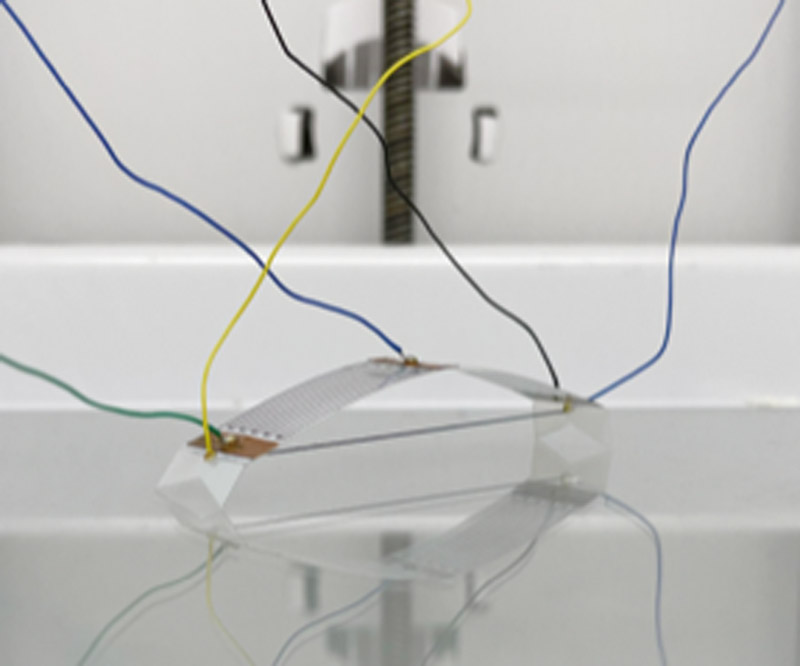
従来のモデルベースの理論を用いてソフトボディロボットの制御を試みた場合、変形しやすい材料は、その挙動が急激に変化することから制御が難しいという問題があった。現在、神経模倣エレクトロニクスがロボット工学の分野でも利用されるようになり、学習や固有感覚を含む感覚シナプスシステムの基本特性を模倣できる高度に統合されたデバイスが実証されている。本研究では、Reservoir Networkに基づくネットワークを物理的に実装し、ソフトボディ・ロボットを作動させることを目指す。具体的には、Echo State Network(ESN)を用いて形状記憶合金(SMA)のヒステリシスを実環境でモデル化することで、タスクラーニングを備えたソフトマシンを実現するための新しいアプローチを試みる。本研究では、ESNモデルがSMAを用いたロボットの運動を可能にするだけでなく、そのための成功戦略を発見することを示す。理論的な枠組みや実験データから確立された標準的な制御モデリングと比較して、ここでは、学習したモデルと制御されたアクチュエータの間の物理的相互作用によって導かれる事後的知識を獲得し、その相互作用から顕著なパターンが現れ、私たちのロボットに最も適切な運動についての知見を得ることができた。
When attempting to control a soft-body robot using conventional model-based theory, deformable materials are difficult to control because their behavior can change rapidly. Neuromorphic electronics are now entering the field of robotics, demonstrating that a highly integrated device can mimic the fundamental properties of a sensory synaptic system, including learning and proprioception. This research work focuses on the physical implementation of a reservoir computing-based network to actuate a soft-bodied robot. More specifically, modeling the hysteresis of a shape memory alloy (SMA) using echo state networks (ESN) in real-world situations represents a novel approach to enable soft machines with task-learning. In this work, we show that not only does our ESN model enable our SMA-based robot with locomotion, but it also discovers a successful strategy to do so. Compared to standard control modeling, established either by theoretical frameworks or from experimental data, here, we gained knowledge a posteriori, guided by the physical interactions between the trained model and the controlled actuator, interactions from which striking patterns emerged, and informed us about what type of locomotion would work best for our robot.
Cedric Caremel, Matthew Ishige, Tung D. Ta, and Yoshihiro Kawahara
関連論文/Related Publications
C. Caremel, M. Ishige, T. D. Ta, and Y. Kawahara, “Echo State Network for Soft Actuator Control,” Journal of Robotics and Mechatronics, Special Issue on Science of Soft Robots, Vol.34, No.2, Tokyo, Japan, April 2022.
関連リンク/Related Links
JRM Most Dowloaded Papers, Apr. 2022
連絡先/Contact
cedric@akg.t.u-tokyo.ac.jp